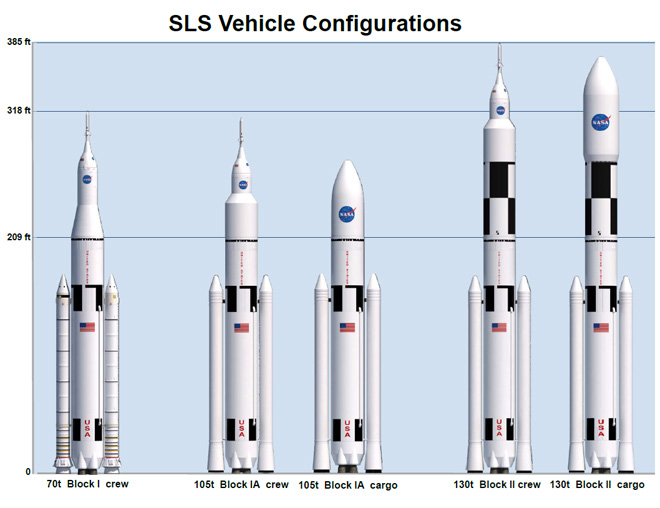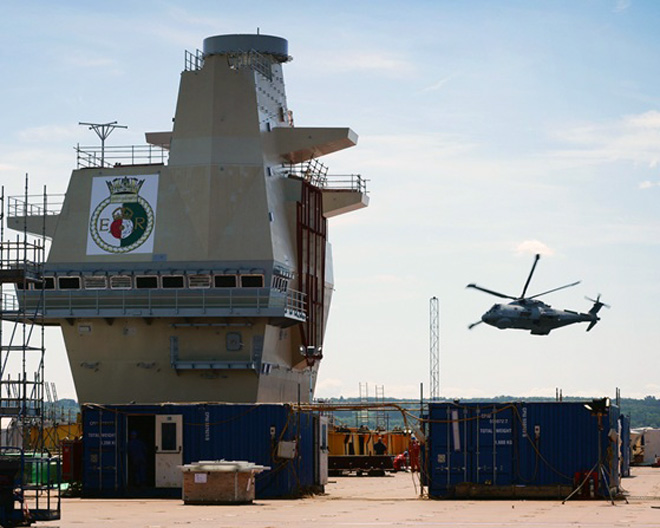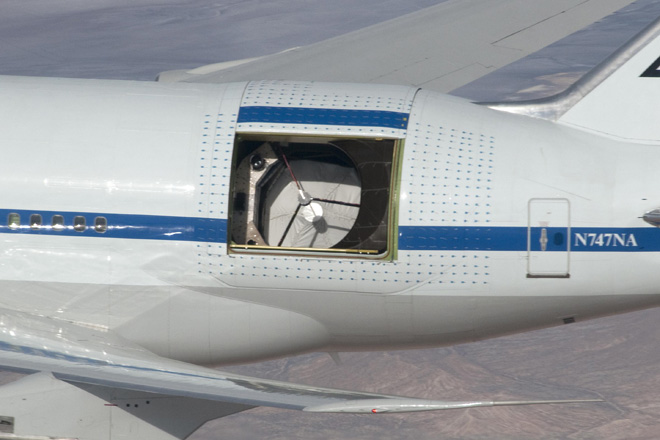
Artist rendering of the planned configurations of NASA's Space Launch System. "t" refers to metric tonnes, not imperial tonnes. Photo: NASA.
WASHINGTON (PTI): NASA and Boeing have inked a USD 2.8 billion deal to develop a giant rocket which is set to be the largest and most powerful ever built, paving the way for manned missions to Mars.
Boeing has finalised a contract with NASA to develop the core stage of the Space Launch System (SLS), the most powerful rocket ever built.
In addition, Boeing has been tasked to study the SLS Exploration Upper Stage, which will further expand mission range and payload capabilities.
The agreement comes as NASA and the Boeing team complete the Critical Design Review (CDR) on the core stage - the last major review before full production begins.
"Our teams have dedicated themselves to ensuring that the SLS - the largest ever - will be built safely, affordably and on time," Virginia Barnes, Boeing SLS vice president and programme manager said in a statement.
"We are passionate about NASA's mission to explore deep space. It's a very personal mission, as well as a national mandate," said Barnes.
During the CDR, which began last month, experts examined and confirmed the final design of the rocket's cryogenic stages that will hold liquefied hydrogen and oxygen.
This milestone marks NASA's first CDR on a deep-space human exploration launch vehicle since 1961, when the Saturn V rocket underwent a similar design review as the US sought to land an astronaut on the Moon.
Scheduled for its initial test flight in 2017, the SLS is designed to be flexible and evolvable to meet a variety of crew and cargo mission needs.
The initial flight-test configuration will provide a 77-tonne capacity, and the final evolved two-stage configuration will provide a lift capability of more than 143 tonnes.
 Previous Article
Previous Article Next Article
Next Article













The Indian Air Force, in its flight trials evaluation report submitted before the Defence Ministry l..
view articleAn insight into the Medium Multi-Role Combat Aircraft competition...
view articleSky enthusiasts can now spot the International Space Station (ISS) commanded by Indian-American astr..
view article